Difference between revisions of "Parchment"
| (19 intermediate revisions by one user not shown) | |||
| Line 5: | Line 5: | ||
<p align=center> | <p align=center> | ||
| − | [[bild: | + | [[bild:Drum of parchment 11.jpg|500px]] |
</p> | </p> | ||
| − | == | + | ==What is parchment?== |
| − | + | Parchment is dry [[rawhide]], which is used untanned and only oiled as [[Leather book cover|book bindings]], lampshades and drum-surfaces. Parchment often has a glistening look, especially when moistened by oil or water. | |
| Line 18: | Line 18: | ||
</p> | </p> | ||
<p align=center> | <p align=center> | ||
| − | '' | + | [[bild:Lampshade-parchment.jpg|500px]] |
| + | </p> | ||
| + | <p align=center> | ||
| + | ''Traditional: Lampshade made of parchment with [[Braided leather|intertwined]] parchment parts or base frame.''<br></p> | ||
<p> </p> | <p> </p> | ||
| Line 28: | Line 31: | ||
</p> | </p> | ||
<p align=center> | <p align=center> | ||
| − | '' | + | ''Image 1: light calf parchment. - Image 2: calf parchment, antique. - Image 3: calf parchment, glassy. - Image 4: light deer parchment''<br></p> |
<p> </p> | <p> </p> | ||
<p align=center> | <p align=center> | ||
| − | [[bild:ziegehell.jpg| | + | [[bild:ziegehell.jpg|165px]] |
| − | [[bild:ziegeglasig.jpg| | + | [[bild:ziegeglasig.jpg|165px]] |
| − | [[bild:pferdhell.jpg| | + | [[bild:pferdhell.jpg|165px]] |
</p> | </p> | ||
<p align=center> | <p align=center> | ||
| − | '' | + | ''Image 1: light goat parchment. - Image 2: goat parchment, glassy. - Image 3: light horse parchment.''<br></p> |
<p> </p> | <p> </p> | ||
| − | + | Parchment is made from [[Sheep leather|sheep]], [[Goatskin|goat]] or [[Calfskin|calf skin]] as well as [[Pig leather|pig]], [[Water buffalo leather - Buffalo leather|buffalo]] or [[Donkey leather|donkey skins]]. The skin is dried without any [[tanning leather|tanning]]. The material is [[Oils & fats in the leather industry|oiled, greased]] and smoothed during the production process. After [[Drying leather|drying]] in a [[Stretching and drying frame|drying frame]], [[Sanding leather|sanding]] with pumice stone is also carried out. As long as the parchment is still wet, it can be easily [[Formed leather|formed]] and tensioned. After drying, it is rigid and no longer malleable. | |
| − | + | Sometimes parchment is also called "parchment leather". Whether this term is correct is debatable and depends on the definition of when an animal skin is a [[leather]]. If the term "leather" is meant when the skin is conserved, the parchment is leather, but not if leather is necessarily understood as an irreversibly [[tanning leather|tanned]] animal skin. | |
<p align=center> | <p align=center> | ||
| − | [[bild:Pergament-Hut-01.jpg| | + | [[bild:Pergament-Hut-01.jpg|500px]] |
| − | + | ||
</p> | </p> | ||
<p align=center> | <p align=center> | ||
| − | '' | + | ''A work of art from parchment leather ([http://www.feinleder-hoffmann.com www.feinleder-hoffmann.com]).'' |
| − | </p> | + | <br></p> |
| + | <p> </p> | ||
| + | |||
<p align=center> | <p align=center> | ||
| − | + | <flashow>//www.youtube.com/v/KchdBfAK2aw&fs=1&color1=0x660000&color2=0x550000&border=1|width=500|height=281,25</flashow></p> | |
| + | <p align=center> | ||
| + | ''The parchment production.'' | ||
| + | </p> | ||
| + | |||
| + | ==The history of parchment use== | ||
| + | <p align=center> | ||
| + | [[bild:Kabinett-Pergamentleder.jpg|500px]] | ||
| + | </p> | ||
| + | <p align=center> | ||
| + | ''Cabinet closet, 17th century, Italy, from the [[Leather museum|DLM - German Leather Museum in Offenbach]]. Parchment figures on the right.'' | ||
<br></p> | <br></p> | ||
<p> </p> | <p> </p> | ||
| − | + | The use of parchment as a writing paper is based on ancient Middle Eastern and Mediterranean civilizations. The term "parchment" comes from the once Greek and now Turkish city Pergamon. Pergamon was a flourishing city of science in antiquity and was the second-largest known library in the world after Alexandria in Egypt. This rivalry prompted the King Ptolemy VI, who ruled in Alexandria (180 to 145 BCE), in his term of office, to cease exporting the plant papyrus to Asia in order to consolidate his own position against King Eumenes II of Pergamon (197-159 BCE). In order to no longer be dependent on imported goods, Pergamon had already started writing on thin animal skins, and continuously improved the technique of parchment production. The Magna Carta (Great Certificate of Liberties) of 1215 from England was written on parchment from animal skin. | |
| − | + | Over the following centuries, the use of parchment became more common instead of the use of papyrus. Since the fourth century of our chronology, more and more content has been gradually transferred to the parchment from the less long-lasting papyrus scrolls. Another advantage of this material was that it was re-useable. Parchment could be erased and re-used by sanding with rough stones. | |
| − | + | Towards the end of the Middle Ages, the use of parchment reduced, when paper production became cheaper and paper was better for the improved letterpress technology. | |
| − | + | For centuries, parchment was the preferred writing material for important documents in the British Parliament. The fine and durable texture of parchment ensured the long-term preservation of laws, royal proclamations, and other significant legal documents. Elaborately written legal texts on parchment scrolls were used and highlighted during important occasions such as royal assent or royal sessions. Over time, the Parliament of England introduced various modernization measures to make the legislative process more efficient. For example, in 2007, the "Parliamentary Papers Act" was passed, enabling the electronic publication and recognition of legal texts as the official version. This rendered the need for parchment as the primary medium for disseminating laws obsolete. | |
| + | Parchment was also used a lot for lampshades. This fashion has however declined. The use of parchment leather for covering drums and comparable musical instruments is still common practice. | ||
| + | |||
| + | ==Uses of parchment== | ||
| + | <p align=center> | ||
| + | [[bild:Sattel-Steigbuegel-Pergamen.jpg|500px]] | ||
| + | </p> | ||
<p align=center> | <p align=center> | ||
| − | + | [[bild:Westernsattel-01.jpg|250px]] | |
| − | [[bild:Westernsattel-01.jpg| | + | [[bild:Flechtung-Pergament-001.jpg|250px]] |
| − | [[bild:Flechtung-Pergament-001.jpg| | + | |
</p> | </p> | ||
<p align=center> | <p align=center> | ||
| − | + | ''[[Leather saddle|Stirrup]] with parchment (light). - [[Leather saddle|Saddle knob]] made of [[Braided leather|braided]] parchment. - [[Leather strips|Strips]] with [[Braided leather|braiding]] made of parchment (light).''<br></p> | |
<p> </p> | <p> </p> | ||
<p align=center> | <p align=center> | ||
| − | [[bild:Flechtung-Pergament-003.jpg| | + | [[bild:Flechtung-Pergament-003.jpg|500px]] |
| − | + | ||
| − | + | ||
</p> | </p> | ||
<p align=center> | <p align=center> | ||
| − | ''[[ | + | [[bild:Flechtung-Pergament-005.jpg|250px]] |
| + | [[bild:Flechtung-Pergament-004.jpg|250px]] | ||
| + | </p> | ||
| + | <p align=center> | ||
| + | ''[[Leather belt]] with [[Braided leather|braiding]] made of parchment (light and dark).''<br></p> | ||
<p> </p> | <p> </p> | ||
<p align=center> | <p align=center> | ||
| − | [[bild: | + | [[bild:Pergament-Trommel-004.jpg|500px]] |
| − | [[bild:Pergament | + | </p> |
| − | [[bild: | + | <p align=center> |
| + | [[bild:Trommel-Pergament-01.jpg|500px]] | ||
| + | </p> | ||
| + | <p align=center> | ||
| + | [[bild:Drum of parchment 10.jpg|500px]] | ||
| + | </p> | ||
| + | <p align=center> | ||
| + | [[bild:Pergament-Instrument-01.jpg|500px]] | ||
</p> | </p> | ||
<p align=center> | <p align=center> | ||
| − | '' | + | ''Instruments covered with parchment.''<br></p> |
<p> </p> | <p> </p> | ||
| Line 102: | Line 130: | ||
</p> | </p> | ||
<p align=center> | <p align=center> | ||
| − | '' | + | ''Skin of a [[Snakeskin|snake]] dried to parchment.''<br></p> |
<p> </p> | <p> </p> | ||
| Line 109: | Line 137: | ||
</p> | </p> | ||
<p align=center> | <p align=center> | ||
| − | ''[[ | + | ''[[fish leather#Cod leather|Cod]] parchment, manufactured by [https://buchbinderei-zerbst.de/ Bookbinding Zerbst].''<br></p> |
<p> </p> | <p> </p> | ||
| Line 117: | Line 145: | ||
</p> | </p> | ||
<p align=center> | <p align=center> | ||
| − | ''[[ | + | ''[[fish leather#Puffer fish - Ball fish|Puffer fish - Ball fish]] dried to parchment as a lamp from Flensburg, Germany. - Parchment lamp from Montevideo in Uruguay.''<br></p> |
| + | <p> </p> | ||
| + | |||
| + | <p align=center> | ||
| + | [[bild:Dried squid skin.jpg|500px]] | ||
| + | </p> | ||
| + | <p align=center> | ||
| + | ''Very exotic: Dried squid skin is also parchment.''<br></p> | ||
<p> </p> | <p> </p> | ||
| Line 124: | Line 159: | ||
</p> | </p> | ||
<p align=center> | <p align=center> | ||
| − | ''[[ | + | ''[[Weapon leather|Protective shield]] covered with [[Thickness of leather|thick]] parchment.''<br></p> |
<p> </p> | <p> </p> | ||
| Line 135: | Line 170: | ||
</p> | </p> | ||
<p align=center> | <p align=center> | ||
| − | '' | + | ''Raincoats made of dried [[Sealskin leather|seal intestine]] from Siberia and Alaska from the 18th century.''<br></p> |
<p> </p> | <p> </p> | ||
| − | In | + | <p align=center> |
| + | [[bild:Parchment Lamellar armor.jpg|500px]] | ||
| + | </p> | ||
| + | <p align=center> | ||
| + | ''Lamellar armor, [[parchment]], Tibet/China, 19th century or earlier ([[Leather museum|© German Leather Museum, C. Perl-Appl]]).''<br></p> | ||
| + | <p> </p> | ||
| + | |||
| + | In Asia, shadow games were widespread. The figures were made from parchment. There were such shadow games in China, Thailand, Java, India and Turkey. Partially, the figures were painted. | ||
| Line 153: | Line 195: | ||
</p> | </p> | ||
<p align=center> | <p align=center> | ||
| − | '' | + | ''Shadow figures made of parchment ([[Leather museum|DLM - German Leather Museum in Offenbach]]).''<br></p> |
<p> </p> | <p> </p> | ||
| + | <p align=center> | ||
| + | [[bild:Parchment-preliminary-drawing-shadow-figures.jpg|500px]] | ||
| + | </p> | ||
| + | <p align=center> | ||
| + | ''Preliminary drawing of motives on parchment at the making of shadow figures seen in New York, American Museum of Natural History.''<br></p> | ||
| + | <p> </p> | ||
| − | == | + | ==Care advice for parchment== |
| − | + | Parchment is very [[leather quality|durable]]. However, when parchment is damaged, gets stained or deformed, it is often impossible to restore. | |
| − | + | ||
| − | + | Clean or dust off parchment only without moisture. Dry dust or brushing off is absolutely ok. At most a slightly damp wipe can be used, where necessary. Crusty stains must be scraped off carefully. | |
| + | Normally, parchment does not need any care. If it is extremely dry, use an oil spray. The spray can be applied either directly or with a cloth. Important for parchment: Do not apply too much! Parchment is modest and only sensitive to moisture. Excessive product application does not apply to maintenance of parchment. | ||
| − | |||
| − | + | A cleansing oil spray can be purchased here: [https://www.lederzentrum.de/aniline-protector-400-ml.html COLOURLOCK - ANILINE, SUEDE & NUBUCK PROTECTOR]. | |
| − | + | ||
| − | + | ||
| − | + | ||
| − | + | ||
| − | + | ||
| − | + | ||
| − | + | ||
| − | + | ||
| − | + | ||
| − | + | ||
| − | + | ||
| − | + | ||
| − | + | ||
| − | + | ||
| − | + | ||
| − | + | ||
| − | + | ||
| − | + | ||
| − | + | ||
| − | + | ||
== Additional information == | == Additional information == | ||
| − | * [[ | + | * [[Dog chews]] |
| − | * [[ | + | * [[Leather paper]] |
| − | + | ||
Latest revision as of 15:14, 24 July 2023
Contents
What is parchment?
Parchment is dry rawhide, which is used untanned and only oiled as book bindings, lampshades and drum-surfaces. Parchment often has a glistening look, especially when moistened by oil or water.
Traditional: Lampshade made of parchment with intertwined parchment parts or base frame.
Image 1: light calf parchment. - Image 2: calf parchment, antique. - Image 3: calf parchment, glassy. - Image 4: light deer parchment
Image 1: light goat parchment. - Image 2: goat parchment, glassy. - Image 3: light horse parchment.
Parchment is made from sheep, goat or calf skin as well as pig, buffalo or donkey skins. The skin is dried without any tanning. The material is oiled, greased and smoothed during the production process. After drying in a drying frame, sanding with pumice stone is also carried out. As long as the parchment is still wet, it can be easily formed and tensioned. After drying, it is rigid and no longer malleable.
Sometimes parchment is also called "parchment leather". Whether this term is correct is debatable and depends on the definition of when an animal skin is a leather. If the term "leather" is meant when the skin is conserved, the parchment is leather, but not if leather is necessarily understood as an irreversibly tanned animal skin.
A work of art from parchment leather (www.feinleder-hoffmann.com).
The parchment production.
The history of parchment use
Cabinet closet, 17th century, Italy, from the DLM - German Leather Museum in Offenbach. Parchment figures on the right.
The use of parchment as a writing paper is based on ancient Middle Eastern and Mediterranean civilizations. The term "parchment" comes from the once Greek and now Turkish city Pergamon. Pergamon was a flourishing city of science in antiquity and was the second-largest known library in the world after Alexandria in Egypt. This rivalry prompted the King Ptolemy VI, who ruled in Alexandria (180 to 145 BCE), in his term of office, to cease exporting the plant papyrus to Asia in order to consolidate his own position against King Eumenes II of Pergamon (197-159 BCE). In order to no longer be dependent on imported goods, Pergamon had already started writing on thin animal skins, and continuously improved the technique of parchment production. The Magna Carta (Great Certificate of Liberties) of 1215 from England was written on parchment from animal skin.
Over the following centuries, the use of parchment became more common instead of the use of papyrus. Since the fourth century of our chronology, more and more content has been gradually transferred to the parchment from the less long-lasting papyrus scrolls. Another advantage of this material was that it was re-useable. Parchment could be erased and re-used by sanding with rough stones.
Towards the end of the Middle Ages, the use of parchment reduced, when paper production became cheaper and paper was better for the improved letterpress technology.
For centuries, parchment was the preferred writing material for important documents in the British Parliament. The fine and durable texture of parchment ensured the long-term preservation of laws, royal proclamations, and other significant legal documents. Elaborately written legal texts on parchment scrolls were used and highlighted during important occasions such as royal assent or royal sessions. Over time, the Parliament of England introduced various modernization measures to make the legislative process more efficient. For example, in 2007, the "Parliamentary Papers Act" was passed, enabling the electronic publication and recognition of legal texts as the official version. This rendered the need for parchment as the primary medium for disseminating laws obsolete.
Parchment was also used a lot for lampshades. This fashion has however declined. The use of parchment leather for covering drums and comparable musical instruments is still common practice.
Uses of parchment
Stirrup with parchment (light). - Saddle knob made of braided parchment. - Strips with braiding made of parchment (light).
Leather belt with braiding made of parchment (light and dark).
Instruments covered with parchment.
Skin of a snake dried to parchment.
Cod parchment, manufactured by Bookbinding Zerbst.
Puffer fish - Ball fish dried to parchment as a lamp from Flensburg, Germany. - Parchment lamp from Montevideo in Uruguay.
Very exotic: Dried squid skin is also parchment.
Protective shield covered with thick parchment.
Raincoats made of dried seal intestine from Siberia and Alaska from the 18th century.
Lamellar armor, parchment, Tibet/China, 19th century or earlier (© German Leather Museum, C. Perl-Appl).
In Asia, shadow games were widespread. The figures were made from parchment. There were such shadow games in China, Thailand, Java, India and Turkey. Partially, the figures were painted.
Shadow figures made of parchment (DLM - German Leather Museum in Offenbach).
Preliminary drawing of motives on parchment at the making of shadow figures seen in New York, American Museum of Natural History.
Care advice for parchment
Parchment is very durable. However, when parchment is damaged, gets stained or deformed, it is often impossible to restore.
Clean or dust off parchment only without moisture. Dry dust or brushing off is absolutely ok. At most a slightly damp wipe can be used, where necessary. Crusty stains must be scraped off carefully.
Normally, parchment does not need any care. If it is extremely dry, use an oil spray. The spray can be applied either directly or with a cloth. Important for parchment: Do not apply too much! Parchment is modest and only sensitive to moisture. Excessive product application does not apply to maintenance of parchment.
A cleansing oil spray can be purchased here: COLOURLOCK - ANILINE, SUEDE & NUBUCK PROTECTOR.
Additional information







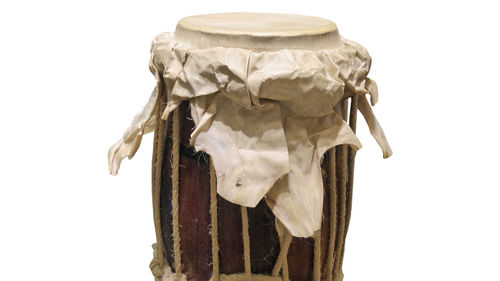
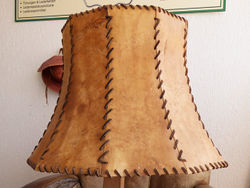
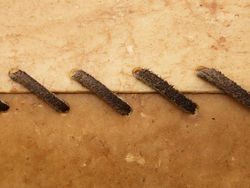
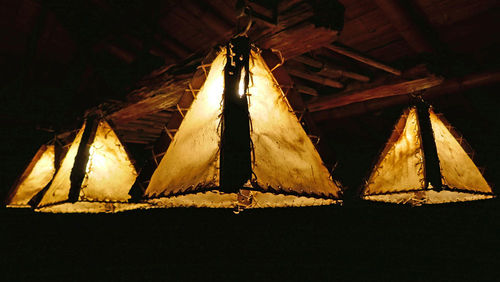
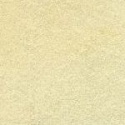
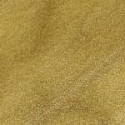
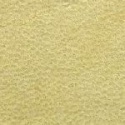
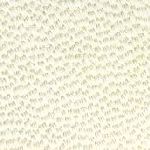
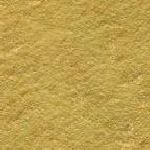
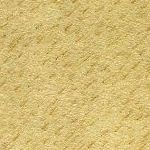
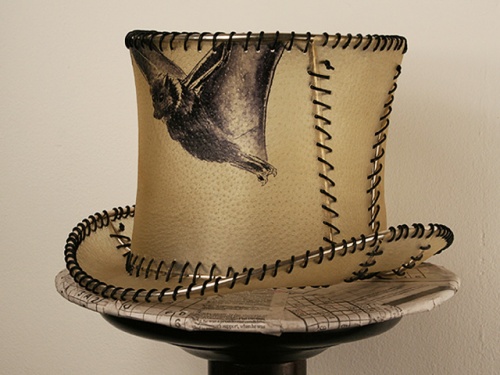
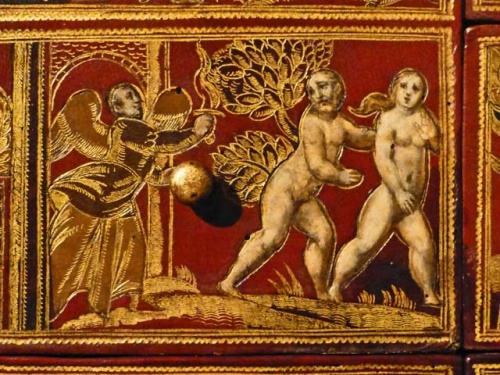
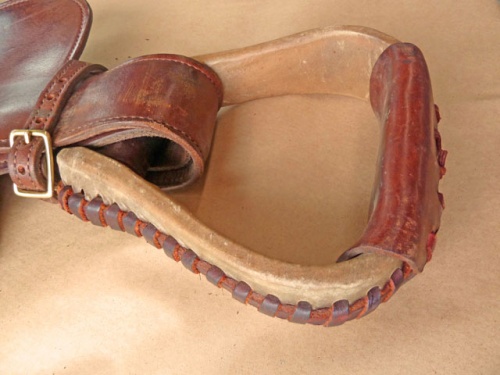
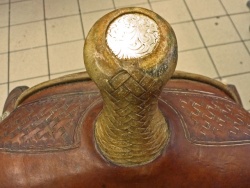
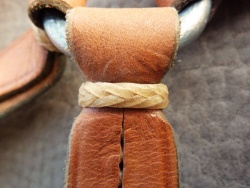
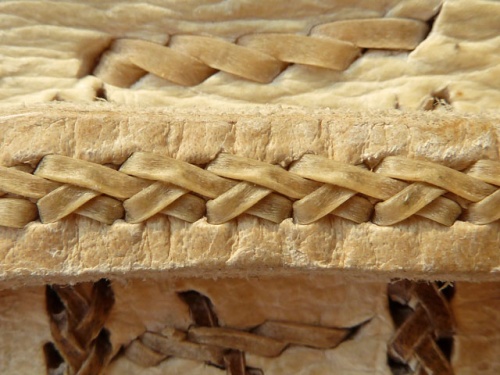
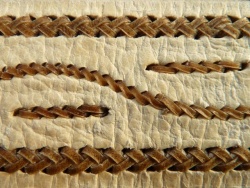
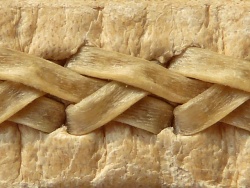
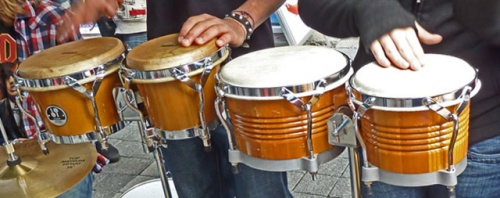
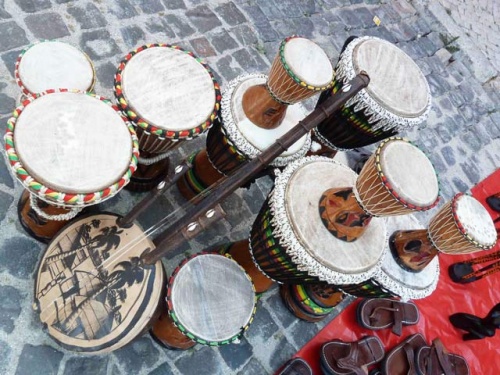
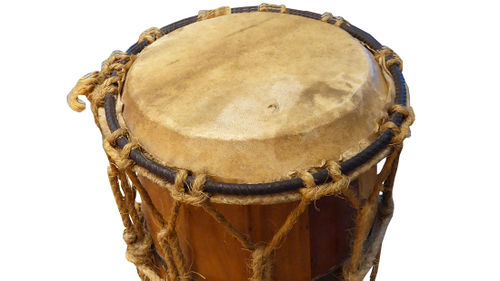
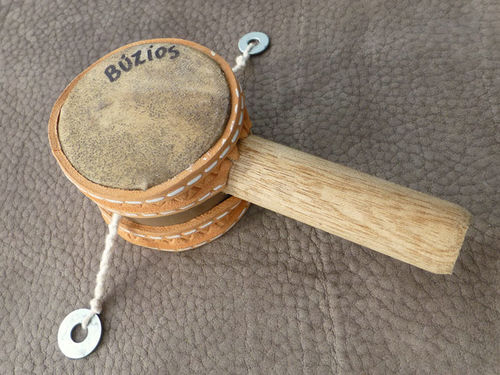

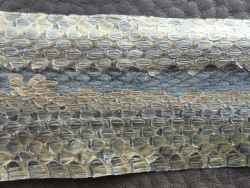
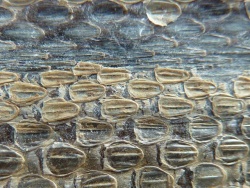
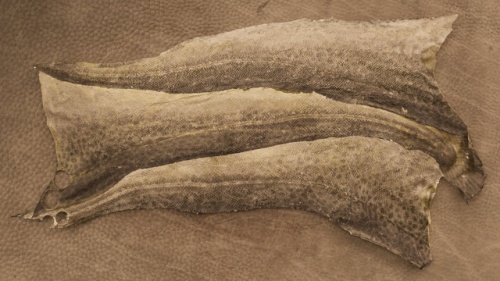
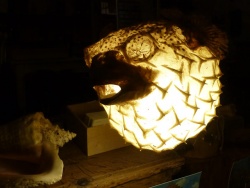
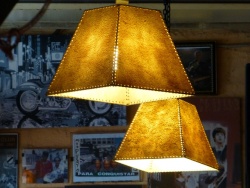
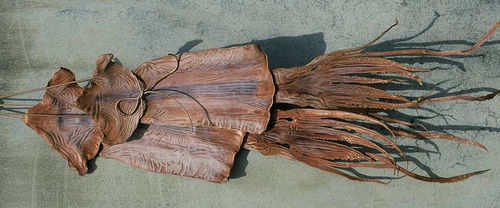
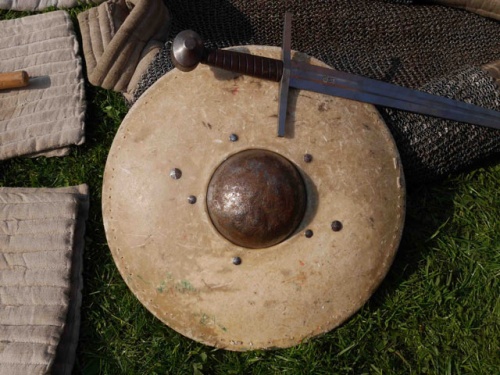
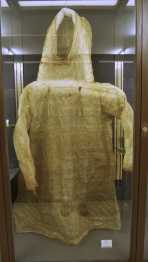
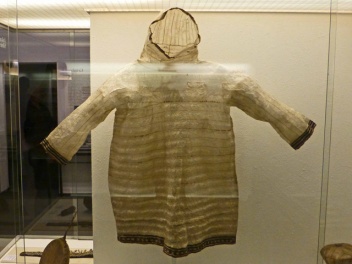
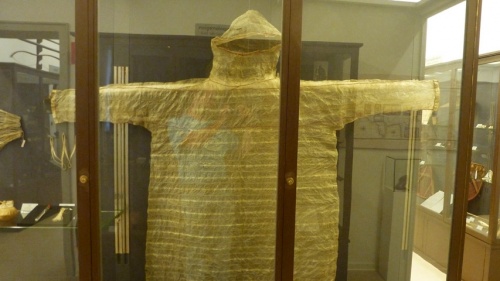
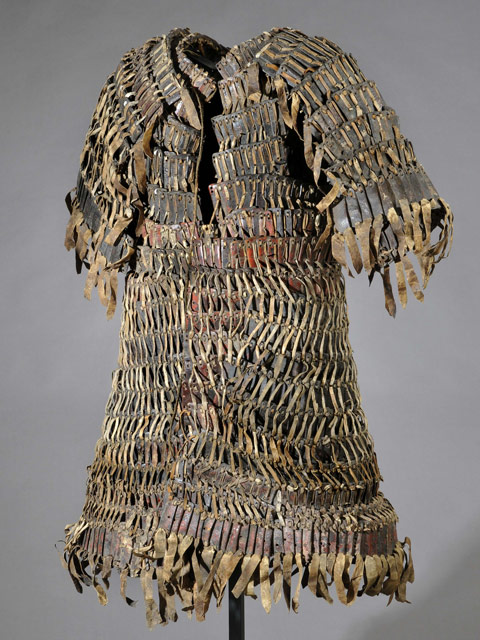
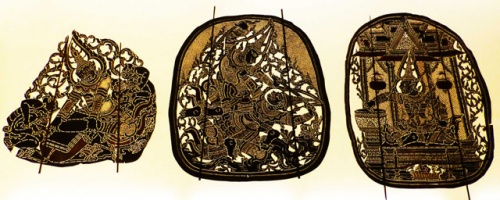
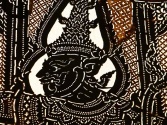
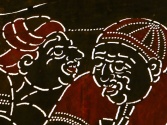
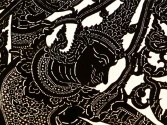
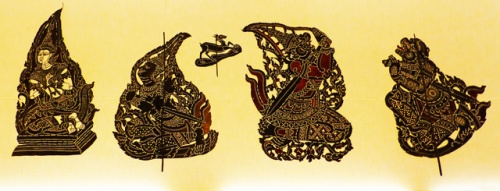
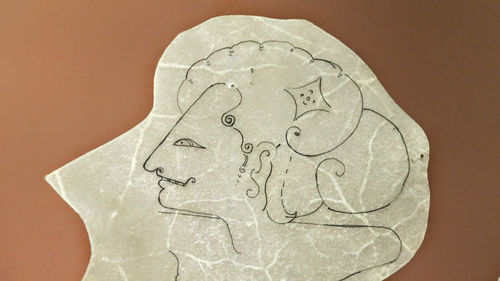

 a kotori web solution
a kotori web solution